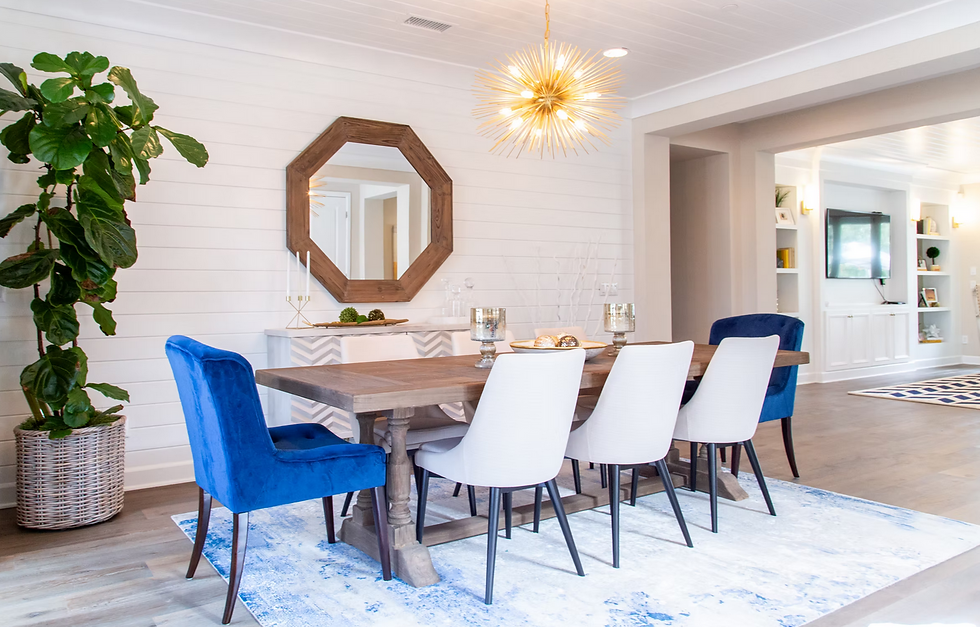Mastering the Art of Interior Design: Decorating Tips Every Design Enthusiast Should Know
- Vision Interiors
- Mar 22, 2023
- 3 min read

Interior design is a combination of art and science, requiring a keen eye for aesthetics as well as a solid understanding of the principles of design.
Whether you're a seasoned design enthusiast or just starting out, there are a few key decorating tips that can help you take your home decor to the next level. In this blog, we'll explore some unique tips for mastering the art of interior design.
Create a Focal Point
A focal point is a key element in a room that draws the eye and anchors the design. This could be a piece of art, a statement piece of furniture, or even a unique architectural feature like a fireplace.
When designing a room, consider how you can create a focal point that will set the tone for the rest of the space. Use color, texture, and scale to draw attention to the focal point and make it stand out.
Mix Textures and Patterns
Mixing textures and patterns is a great way to add depth and interest to a room. Combining different textures like wood, metal, and fabric can create a rich, layered look, while mixing patterns like stripes, florals, and geometric shapes can add visual interest and a sense of playfulness.
When mixing textures and patterns, be sure to consider the scale and color of each element to ensure they work together harmoniously. Start with a neutral base and then layer in textures and patterns for a cohesive and visually appealing design.
Incorporate Lighting
Lighting is a key element in interior design, and it can have a significant impact on the mood and atmosphere of a room. Incorporate a variety of lighting sources, including overhead lighting, table lamps, and floor lamps, to create a warm and inviting space.
Consider the type of lighting you need for each space, such as task lighting in a home office or reading nook, and ambient lighting in a living room or bedroom. Use dimmer switches and smart bulbs to control the intensity and color of the lighting to create the desired mood.
Embrace Negative Space
Negative space, also known as white space, is the area in a room that is intentionally left empty. Embracing negative space can create a sense of balance and harmony in a room, and allow the eye to focus on key elements like artwork or furniture.
When designing a room, be intentional about the negative space and don't feel the need to fill every inch with furniture or decor. Use negative space to create a sense of calm and simplicity, and allow key elements to shine.
Layer Accessories
Accessories are the finishing touch in any room design, and layering them can add depth and dimension to a space. Group accessories in odd numbers, such as three or five, and vary the height and texture of each element.
When selecting accessories, consider the color palette and overall style of the room, and choose items that complement the design. Incorporate personal touches like family photos or unique travel souvenirs to add a sense of personality and warmth to the space.
In Conclusion
Mastering the art of interior design requires a combination of creativity and knowledge. By creating a focal point, mixing textures and patterns, incorporating lighting, embracing negative space, and layering accessories, you can take your home decor to the next level. Don't be afraid to experiment with different design elements and trust your instincts to create a space that is uniquely yours.




Comments